Connecting the Generator to the Brain
My generator was an island of mystery in my home data pool.
The Overview
When we moved to Northern Michigan, loosing power was not an option. While I was not working from home as much back then, my wonderful Wife made it very clear that she would not be going cold in the great artic winters we have. “Duly noted,” I said, and when our home was built, I ensured that we buried the power lines up our winding driveway and installed a 22kw Generac generator. I dusted off my hands and called it a day. Success!
For the most part, this generator served more for peace of mind than actual safety and wellbeing, but that started to change in the last few years. For example, in 2021, we lost power for 12 whole days in the previous six months — calendar days.
We started this journey wondering if the generator was working outside its test window as it was rare. That moved on to be concerned about the amount of propane we had in the tank. We went from filling our 250-gallon/946-litre tank once a year to multiple times a year. When the weather outside is in the negative digits, you cannot afford for the heat not to work.
The Math
When I started to look more to the generator as a safety component, I began to do some math (as engineers do) and determined the following:

- Our 22kw generator at full load consumes around 3.6 gph and 2.1 gph at 50%
- 250 gallons is our total capacity
- 100% load = off-grid for 2.8 days
- 50% load = off-grid for ~5 days
The propane also supplies our stove (not mission essential) and our fireplace (mission essential), so we cannot guarantee a full tank at the start of an event; it is, give or take, off by a few days. Our most prolonged outage was 5 days straight last year, but we were out camping, and thus our load in the home was very low.
We had an issue all the same.
The Problem
I started to pencil out my problems to understand better how to fix this mess of a microgrid challenge.
- I had no insights into the generator’s output power or load performance.
- The propane tank capacity could be read, but by going outdoors in the frigid cold & snow to look at the dial. I am a lazy engineer, so this needed to change.
- We needed a good energy baseline to understand our common baseload in peak seasons.
- Our significant loads needed to be controllable to turn on/off with events - EV Chargers, Geothermal, Server Farm, etc.
- We needed some way to “produce” our energy.
The Solution
I had no insights into the generator’s output power or load performance.
Raspberry Pi to the rescue! A fantastic project from jgyates called genmon allows you to read the data from most modern Generac systems via the same bus the vendor does with their remote monitoring solution. The only hard requirement is you need to understand how to make a cable, which if you can terminate ethernet, you can do this.
I decided against a particular case and some of the other recommendations given where I live and where I mounted it within the enclosure, but you should heed those warnings if you don’t.
Once I had the genmon software installed and configured to my network and system, I was presented a nifty dashboard to track via API, SMS, MQTT, or even SNMP. Swoon.


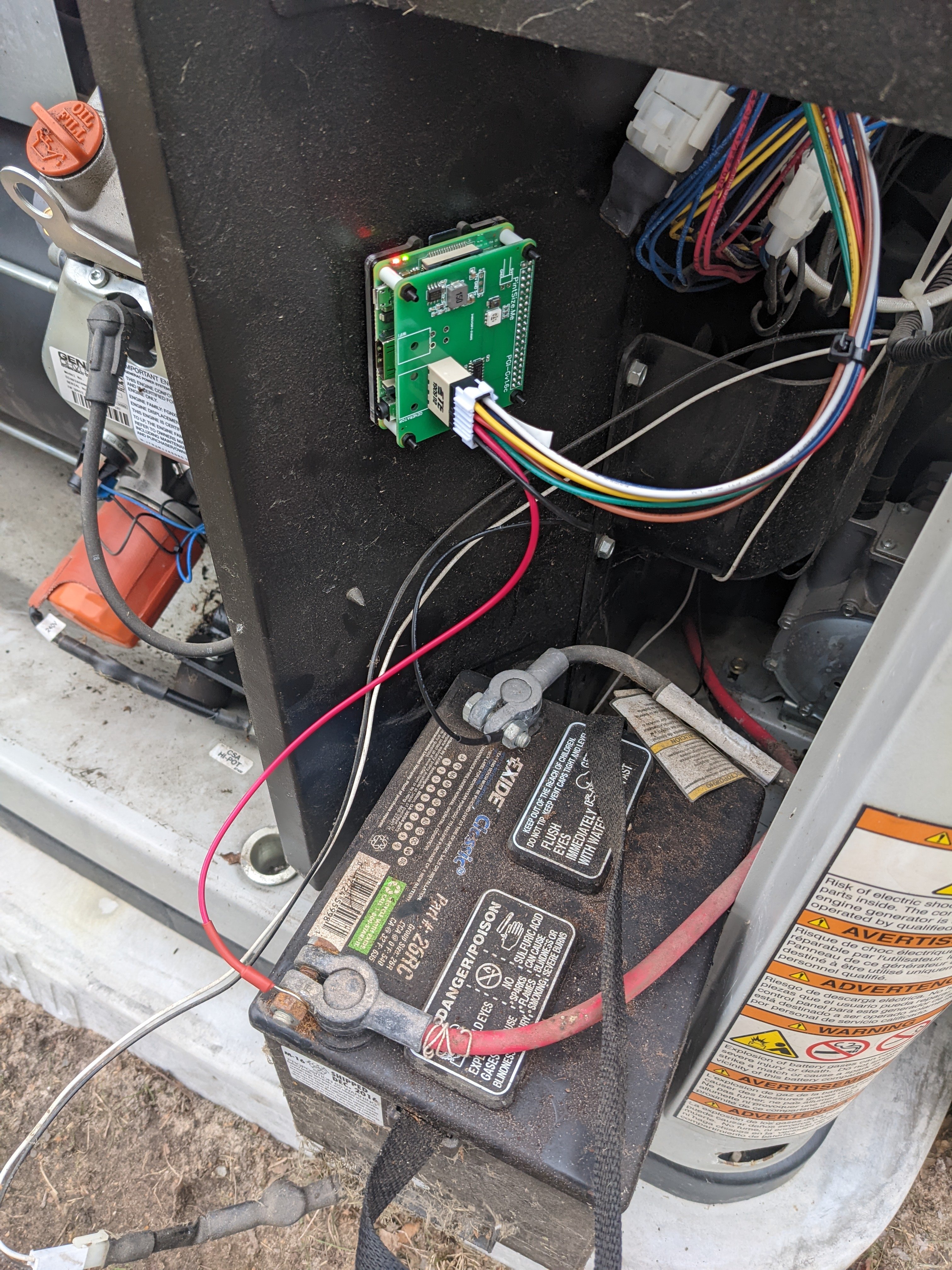
The propane tank capacity could be read, but by going outdoors in the frigid cold & snow to look at the dial. I am a lazy engineer, so this needed to change.
Reading the tank remotely proved a little more complicated than I expected. It should come as no shock that making data easy is not a key driver for utility providers, but I assumed there would be something similar to optical readers on some electric meters.
In the end, I was left with two options:
- Upgrade the meter to a Remote Ready Read Dial (R3D) and jerry-rig something to read it
- Look for something COTS
Given how much time I had already sunk into this project, the buy vs build was predetermined by my schedule.
TankUtility with an R3D meter upgrade was where I landed. Tankutility provides an API that Genmon can integrate into preloaded modules.
The device is…interesting…Generac sells their version of the device on Amazon and ended up the quickest way to get it installed. I have wifi coverage all over my land but keep in mind the device is susceptible. The other thing I’d recommend is to upgrade to lithium batteries as the device likely will deal with weather fluctuations that kill the juice in standard batteries.
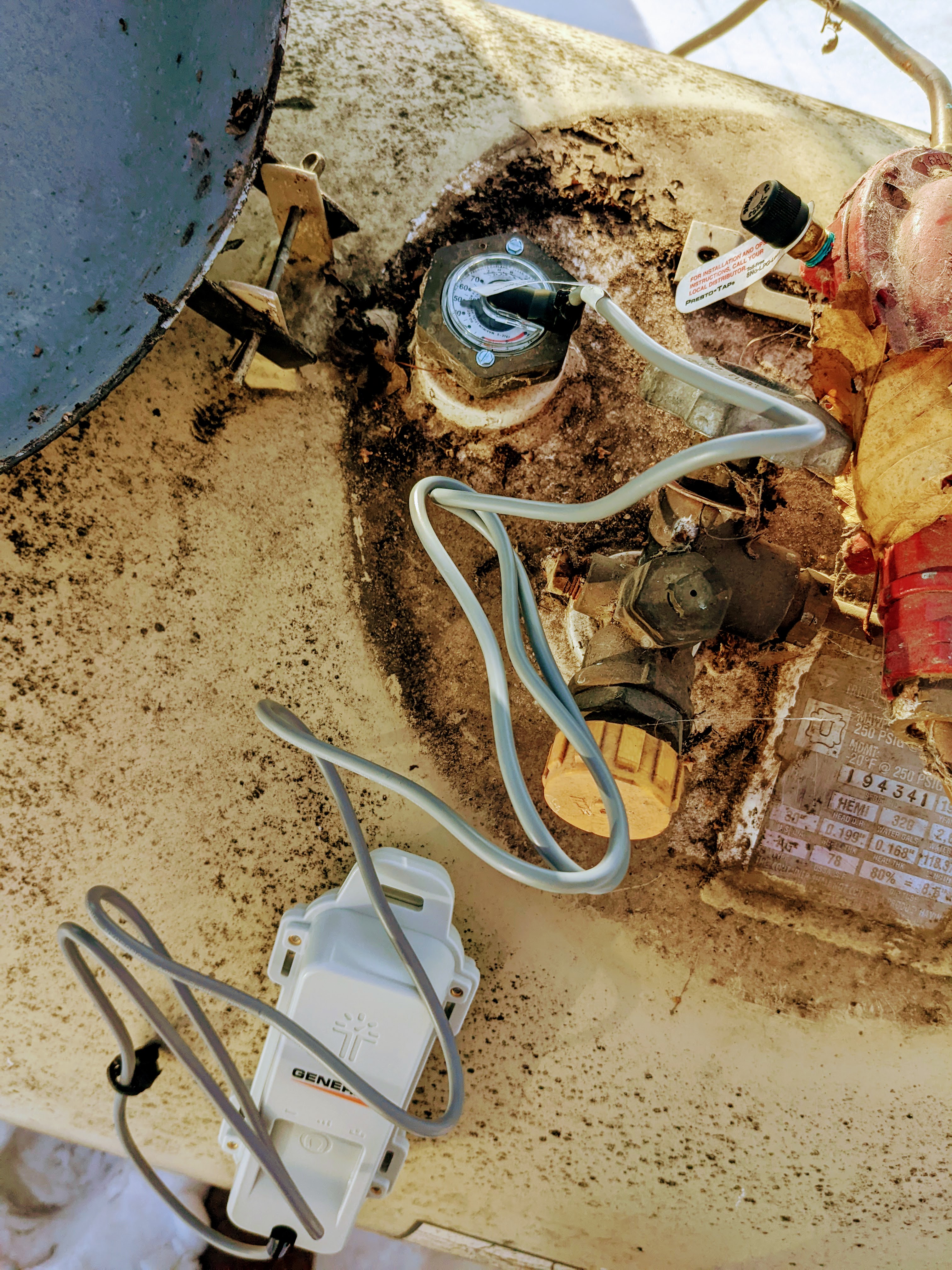
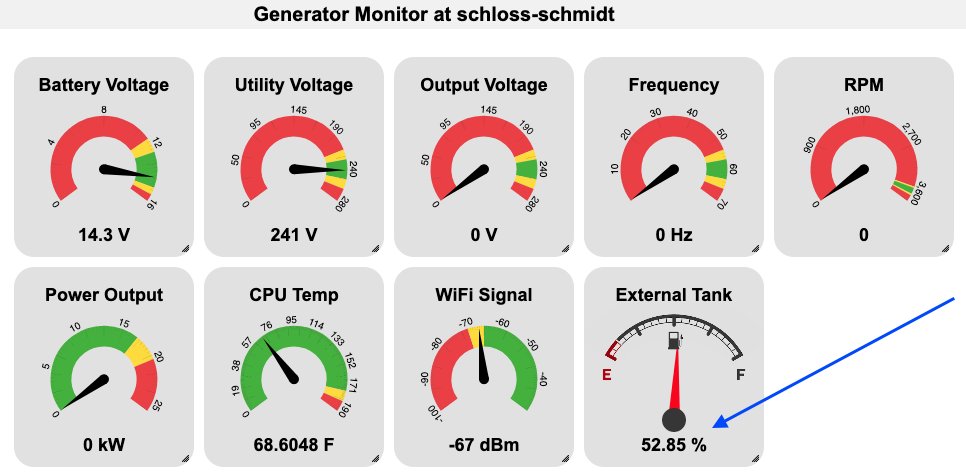
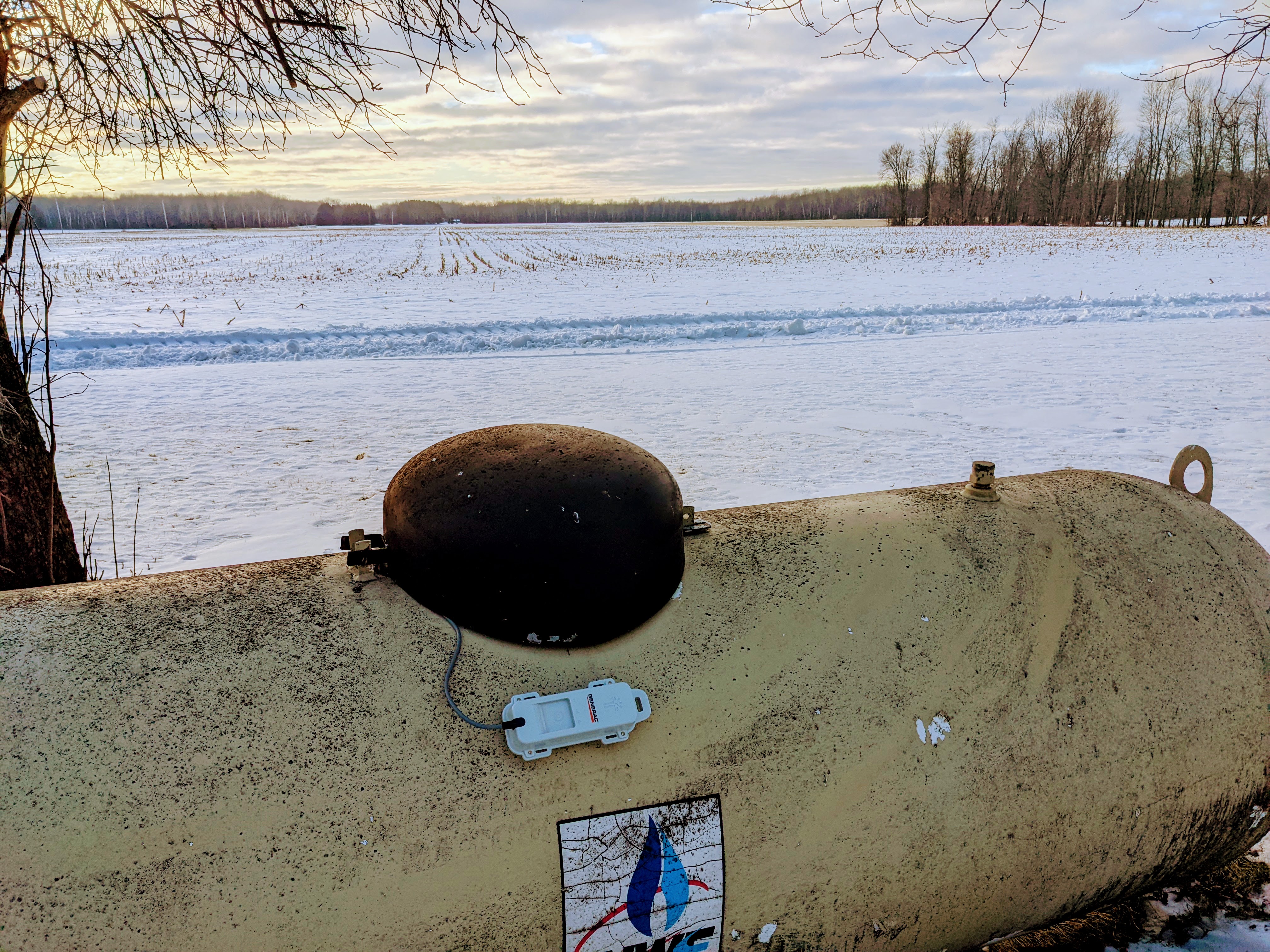
We needed a good energy baseline of the home to understand our common baseload in peak seasons
No worries there, lots of data! Can you tell when our car charges? :)

Our significant loads needed to be controllable to turn on/off with events - EV Chargers, Geothermal, Server Farm, etc.
Done! Home Assistant provides lots of good docs on doing this for your means. Well beyond this blog post.
We needed some way to “produce” our energy.
We installed solar this past season and hopefully will get some batteries once our Ford Lightning arrives. While I am not a big believer in V2G (a post for another time), it is the quickest way currently to get batteries into your home. The wait times from LG, Sonnen, and Tesla in our area are unknown.
I am hopeful that the generator will play a less critical role with the addition of energy storage. The nameplate on our PV array is 22kw, which is nowhere near that much during a Michigan winter.
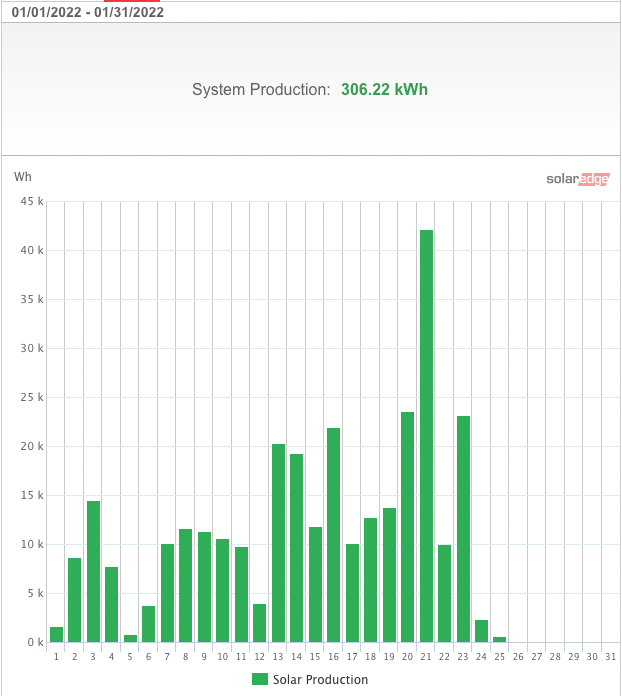
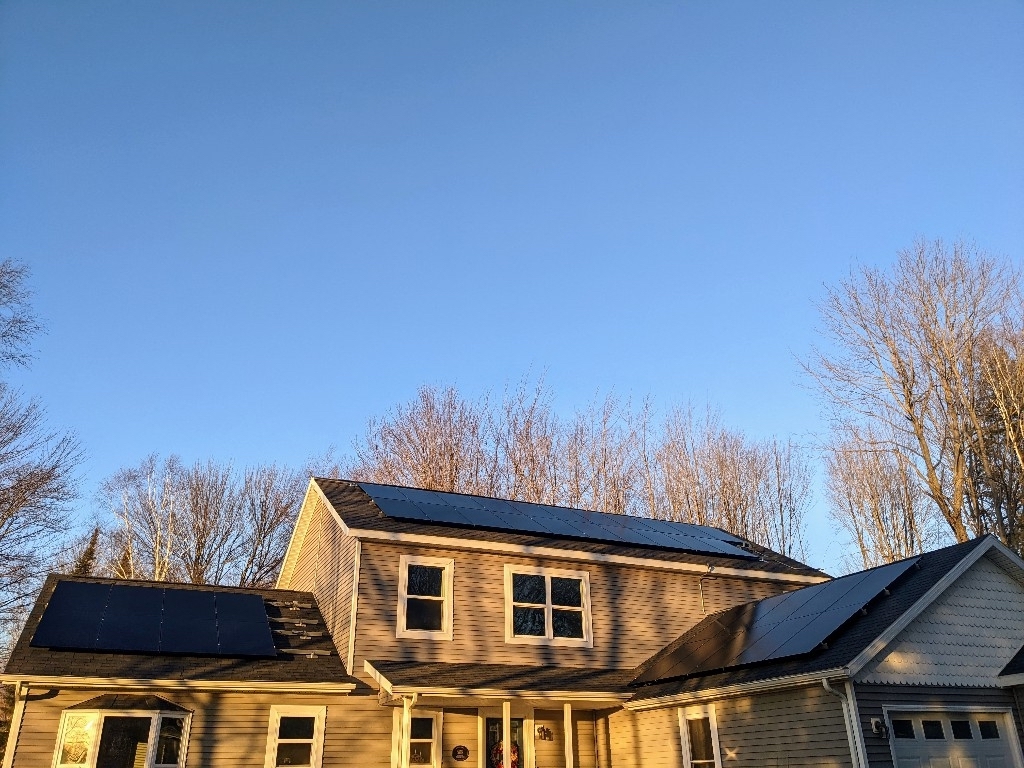
The Future
Once we have batteries, it will change the brain a bit. For example, do I want to charge the tesla if we are grid disconnected? Is it worth putting in smart breakers/panels or breaking out a critical load panel?
